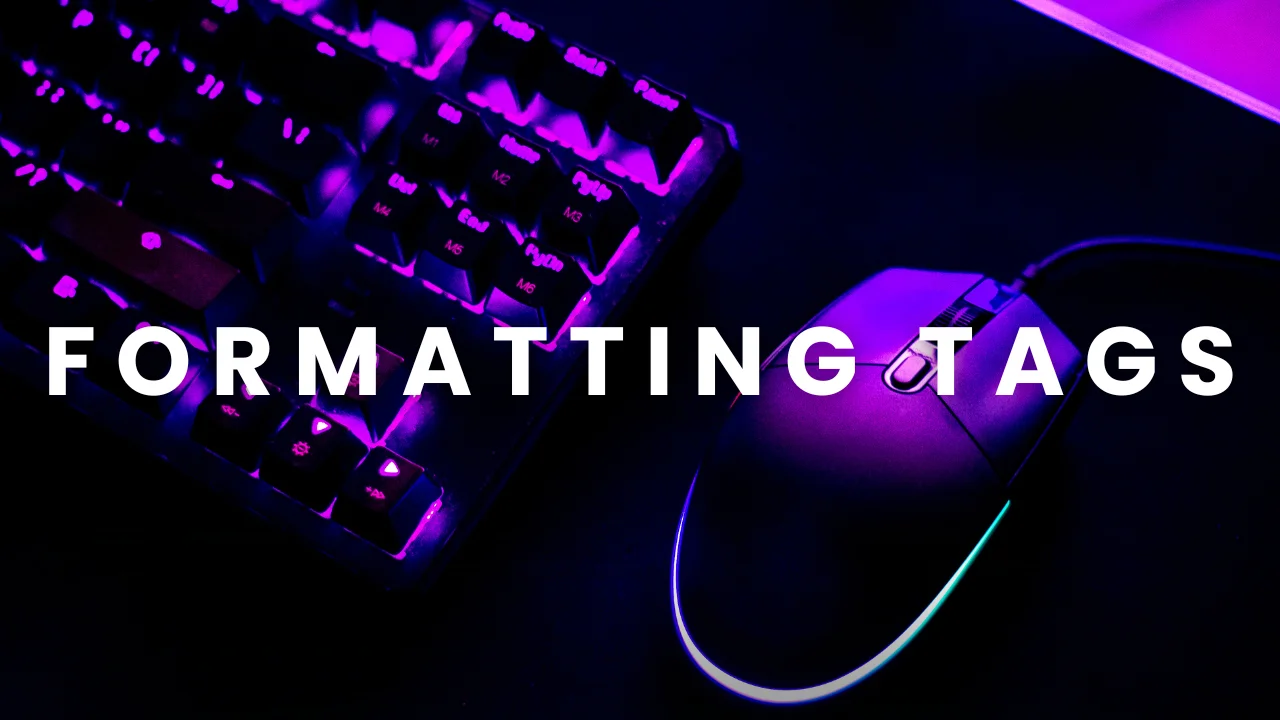
Formatting TAG IN HTML
HTML formatting tags are essential for styling and organizing content on webpages. Tags like <b> for bold, <i> for italic, and <u> for underline allow for text emphasis. Meanwhile, <strong> and <em> offer stronger emphasis options. Subscript and superscript features are facilitated by <sub> and <sup> respectively. These tags, when combined with other HTML elements and CSS, play a crucial role in enhancing readability and aesthetics, ensuring a visually appealing and well-structured presentation of information on the web.
Example-1
Output :
This text is bold
This text is italic
This text is strong.
This text is underlined
Example-2
Output :
This is subscript and superscript
This text is emphasized.
HTML Small Formatting
HTML Marked Formatting
Example-3
Output :
My favorite color is blue red.
My favorite color is red.
Paragraph in monospaced font.In conclusion, HTML formatting tags play a crucial role in structuring and styling web content. From emphasizing text with <strong> and <em> to organizing data with <ul> and <ol>, these tags provide versatility and clarity to web design. With the right implementation, they enhance user experience, accessibility, and readability. Understanding and utilizing formatting tags effectively can greatly improve the presentation and functionality of web pages, contributing to a more engaging online experience.